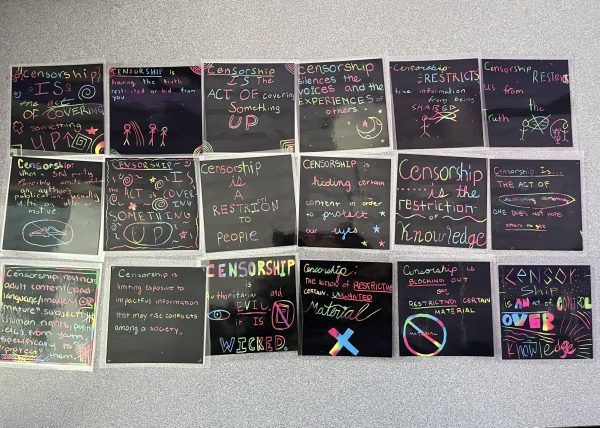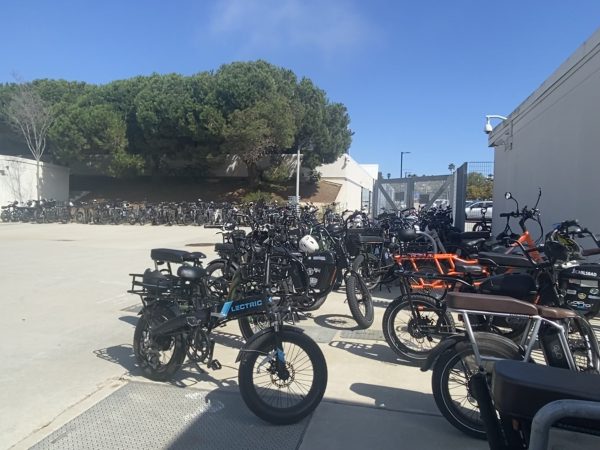WiFi going offline, indefinitely?

Graphic by Alex Gresham
WiFi is a staple technology that has revolutionized learning in schools across the world. Connecting to the internet through wireless communication is impossible to live without in today’s society, but unfortunately for students, CHS has decided to limit access of WiFi to only school-approved devices following an influx of issues.
With the WiFi change, general unrest remains among students who used to frequent the WiFi on their devices. Some students feel that enough isn’t being done to fix the situation, and that simply ending online access for all devices is a debatable decision.
“I totally get it from [the administration’s perspective] but there’s probably a better solution,” senior Nate Mills said.
The WiFi being limited to just school approved devices has caused many students on phones and laptops that are not Chromebooks to struggle to keep up in classes. As teachers and classrooms are using WiFi more, this becomes a difficult issue to address.
“I feel like administration is being reactive instead of proactive to a situations,” Mills said. “[Students] are going to find other ways.”
Many students like Mills share the same concerns that enough isn’t being done to remedy the WiFi problem. However, CUSD is working on bringing the WiFi back for all devices while addressing the reason why the WiFi was taken down in the first place: VPNs.
A VPN is a Virtual Private Network. Essentially, VPN’s prevent network administrators from viewing and blocking activity from a personal device. This allows students to access websites normally blocked such as YouTube, most social media sites and certain news articles. VPN’s are the true reason why the school has elected to restrict WiFi usage.
“After consulting with [San Diego County Office Of Education] they were able to identify an anomaly in our network profile: lots of Virtual Private Network (VPN) traffic,” Joe Hartman, the Director of Technology for the district of Carlsbad, said. “In our case…the most likely explanation was students using the VPNs on the CUSD-WiFi network to bypass the CUSD filter.”
However, students often use VPN’s for legitimate reasons, one of which is to access certain websites accidentally blocked by the school’s web filter. Fortunately for students, there is a way to get to necessary websites without the use of a VPN.
“The CUSD filter has an ‘Allow List’,” Hartman said. “If any student encounters a website they believe is erroneously blocked they should contact their teacher with the website address and URL. Any teacher in CUSD can enter an IT ticket requesting a website be added to the Allow List. There are currently 480 websites on the CUSD Allow List so this is a common request.”
CUSD is also working on a solution to give all devices WiFi access while restricting users who use VPN’s, which has the added benefit of boosting how much traffic the WiFi can take. The new installments feature both system upgrades and security revisions to address the new issue of VPN’s.
“The district has been working for many months to increase the total internet bandwidth…[but] this change requires significant equipment upgrades, including a new cloud-based filter, a new firewall, and a new internet circuit from the CUSD District Office to the San Diego County Office of Education,” Hartman said.
Updating the WiFi equipment to address this issue is difficult and a slow process. However, the district is working on bringing the WiFi back for all.
“The new firewall…is better able to detect and block VPN traffic than the previous device,” Hartman said. “Also…the circuit upgrade must be coordinated with CUSD’s network provider, AT&T.”
There technical solutions plan to resolve the WiFi issues for both staff and students at the school. With the importance of WiFi in schools today, administration ultimately wants to ensure these tools are used effectively and in the best interest of students. The new firewall…is better able to detect and block VPN traffic than the previous device. — Hartman said.
“We have responsibilities to make sure these tools are used in positive and productive ways,” Brian Brockett, the principal, said. “We don’t really want to limit access-what we want to do is to create a mindset where we’re using tools, whether it be WiFi or social media, in positive ways…The fact that this is an issue that students care about I think says a lot about the desire to be connected and to be able to access information and do things. I think that it’s a cool place to be in terms of what the impact of technology is.”
WiFi in schools isn’t going anywhere anytime soon, but students will have to wait for the district to make upgrades that will potentially bring back the WiFi for all devices. One thing is for certain; students hoping to use VPN’s to bypass the school’s filter are simply out of luck.
“There are several steps in the process and high potential for delays, but AT&T’s own timeline projects the upgrade to be completed in mid January, 2020,” Mr. Hartman said.








